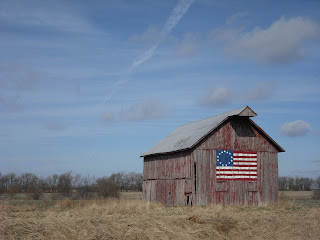Finished the day with a drink in the bar on the 96th floor of the John Hancock Tower, looking down on Chicago
Patriotic barn on old Route 66...
 Main St, USA
Main St, USAThis is my blog of my travels - starting with a trip roughly along Route 66 from Los Angeles to Chicago in March 2009. Perhaps this will be more successful than other attempts to keep travel diaries (and at least it will involve slightly fewer ragged ticket stubs to serve as memories!)
 Main St, USA
Main St, USA ...and the view from the top - to get to the top you have to get into little 5 seater capsules, a bit like you might have on a ferris wheel, and then these are pulled to the top.
...and the view from the top - to get to the top you have to get into little 5 seater capsules, a bit like you might have on a ferris wheel, and then these are pulled to the top.
Memorial to the Oklahoma City bombing




